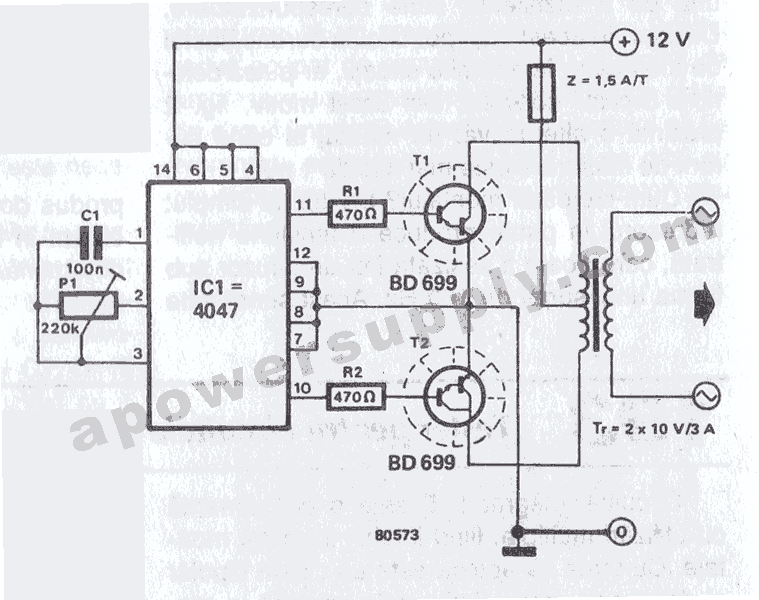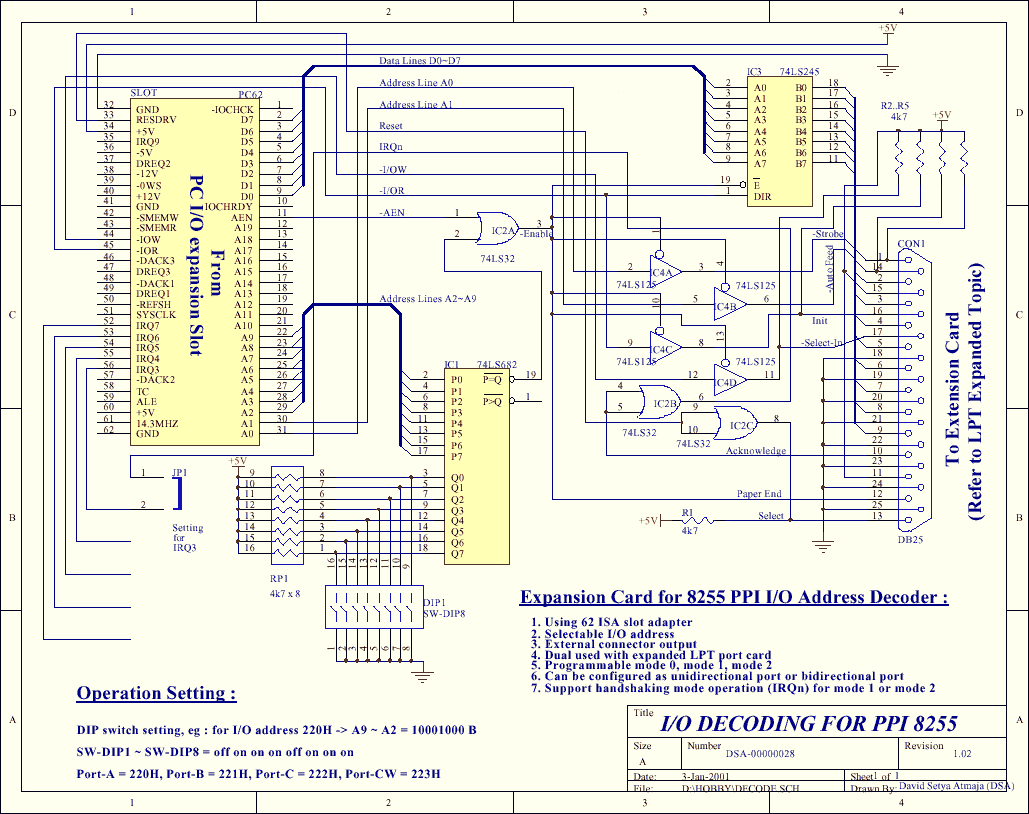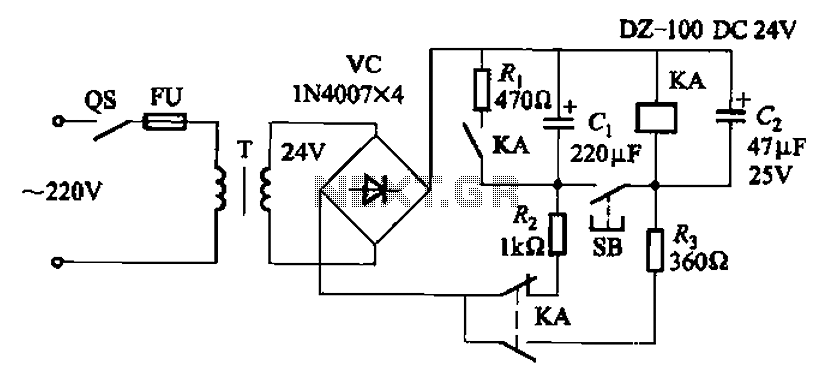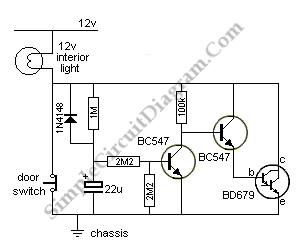
Car alarm circuit
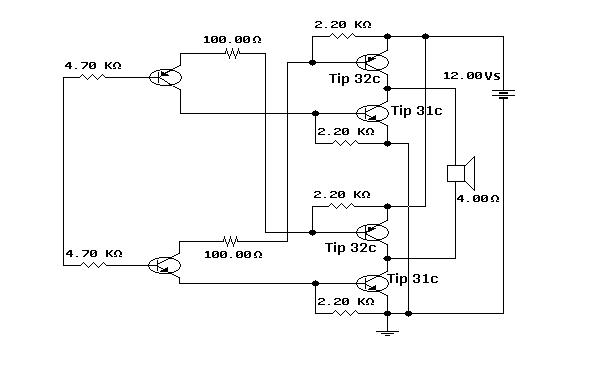
A car alarm, in its simplest form, consists of one or more sensors connected to a siren. The most basic alarm features a switch on the driver's door, which is wired to trigger the siren when the door is opened. In practice, car alarms typically incorporate multiple sensors and controls. The central component of the system is often referred to as the "brain." The "brain" can range from a simple electronic circuit with a few integrated circuits (ICs) to a small computer in more advanced systems. Its primary function is to monitor the status of the sensors and activate alarm devices, such as the horn, headlights, or an installed siren, when an alarm condition is detected. The alarm is triggered when specific switches connected to the sensing devices are opened or closed. Security systems primarily differ based on the types of sensors employed and the wiring configuration of the various devices to the brain. This design is a remake of the "Cobra" alarm system for cars, which gained popularity in 1995 and was widely available in supermarkets. This updated version allows users to customize sounds, timings, and other settings, addressing the limitations of the original design, which offered no options for personalization, resulting in uniform sounds across all installations.
The car alarm system operates through a network of sensors, which may include door switches, motion detectors, glass break sensors, and tilt sensors. Each sensor is strategically placed to maximize coverage and detect unauthorized access or tampering. Upon triggering, the brain processes the input from these sensors and determines the appropriate response.
The brain of the alarm system is designed with a microcontroller that interprets the signals from the sensors. It may include a power management circuit to ensure that the system remains operational even when the vehicle's main power is off. The microcontroller can be programmed with various algorithms to differentiate between false alarms and genuine threats, enhancing the overall reliability of the system.
Alarm activation can be configured in multiple ways, allowing users to set different levels of sensitivity for each sensor. For instance, the door switch might be set to trigger an immediate alarm, while the motion detector could have a time delay to avoid false triggers from passing pedestrians. The siren and other alarm devices can be driven by a power amplifier circuit to ensure that they produce a loud, attention-grabbing sound.
The user interface for this alarm system may include a keypad or a remote control, enabling the user to arm or disarm the system, adjust settings, and choose different alarm sounds. This flexibility is a significant improvement over the original Cobra alarm, allowing for personalization and enhanced user experience. Additionally, the system can be integrated with a smartphone application, providing real-time notifications and remote access to the alarm functions.
In summary, this car alarm system combines modern electronics with user-friendly features, resulting in a sophisticated security solution that addresses the limitations of earlier designs while providing enhanced functionality and customization options.A car alarm in its simplest form, needs to be nothing but one or more sensors connected to some sort of siren. The very simplest alarm would have a switch on the driver`s door, and it would be wired so that if someone opened the door the siren would start wailing.
Real world alarms have typically more sensors and controls. The center of the system is often called "brain". The "brain" can be anything from a quite simple electronics circuit (few ICs) up to a small computer (most adavnced systems). . The brain`s job is to look for state of the sensors and activate alarm devices (your horn, headlights or an installed siren) when alarm is needed.
Alarm is started when certain switches that power sensing devices are opened or closed. Security systems differ mainly in which sensors are used and how the various devices are wired into the brain. This is a remake of the alarm "cobra" for a car. The alarm cobra was very famous in the 1995, it was widely sold in supermarkets. This design is a remake of that alarm. This remake allows the user to change all the sounds, times, etcs. The original design did not have any options for those and all the the cars had the same sound. 🔗 External reference
The car alarm system operates through a network of sensors, which may include door switches, motion detectors, glass break sensors, and tilt sensors. Each sensor is strategically placed to maximize coverage and detect unauthorized access or tampering. Upon triggering, the brain processes the input from these sensors and determines the appropriate response.
The brain of the alarm system is designed with a microcontroller that interprets the signals from the sensors. It may include a power management circuit to ensure that the system remains operational even when the vehicle's main power is off. The microcontroller can be programmed with various algorithms to differentiate between false alarms and genuine threats, enhancing the overall reliability of the system.
Alarm activation can be configured in multiple ways, allowing users to set different levels of sensitivity for each sensor. For instance, the door switch might be set to trigger an immediate alarm, while the motion detector could have a time delay to avoid false triggers from passing pedestrians. The siren and other alarm devices can be driven by a power amplifier circuit to ensure that they produce a loud, attention-grabbing sound.
The user interface for this alarm system may include a keypad or a remote control, enabling the user to arm or disarm the system, adjust settings, and choose different alarm sounds. This flexibility is a significant improvement over the original Cobra alarm, allowing for personalization and enhanced user experience. Additionally, the system can be integrated with a smartphone application, providing real-time notifications and remote access to the alarm functions.
In summary, this car alarm system combines modern electronics with user-friendly features, resulting in a sophisticated security solution that addresses the limitations of earlier designs while providing enhanced functionality and customization options.A car alarm in its simplest form, needs to be nothing but one or more sensors connected to some sort of siren. The very simplest alarm would have a switch on the driver`s door, and it would be wired so that if someone opened the door the siren would start wailing.
Real world alarms have typically more sensors and controls. The center of the system is often called "brain". The "brain" can be anything from a quite simple electronics circuit (few ICs) up to a small computer (most adavnced systems). . The brain`s job is to look for state of the sensors and activate alarm devices (your horn, headlights or an installed siren) when alarm is needed.
Alarm is started when certain switches that power sensing devices are opened or closed. Security systems differ mainly in which sensors are used and how the various devices are wired into the brain. This is a remake of the alarm "cobra" for a car. The alarm cobra was very famous in the 1995, it was widely sold in supermarkets. This design is a remake of that alarm. This remake allows the user to change all the sounds, times, etcs. The original design did not have any options for those and all the the cars had the same sound. 🔗 External reference
